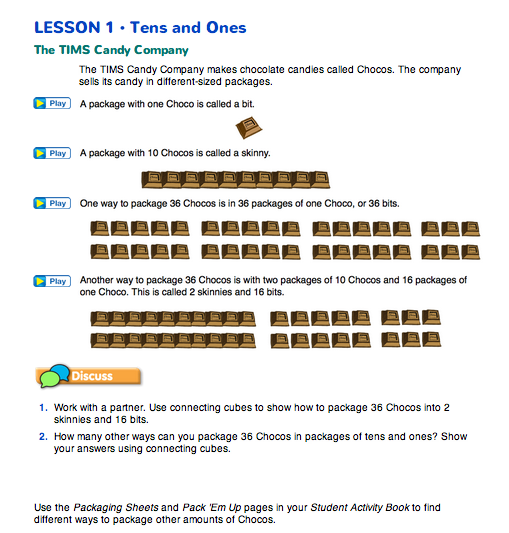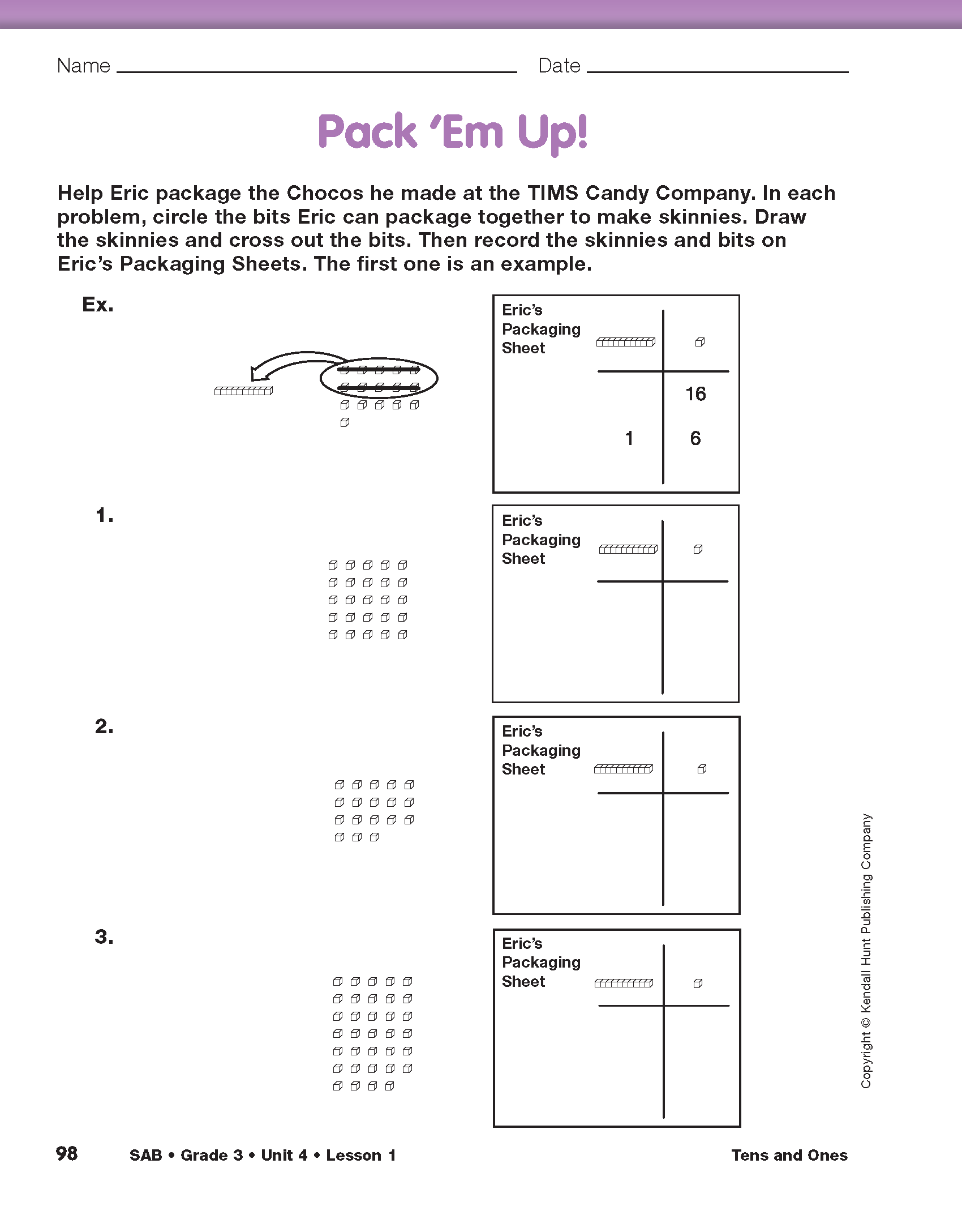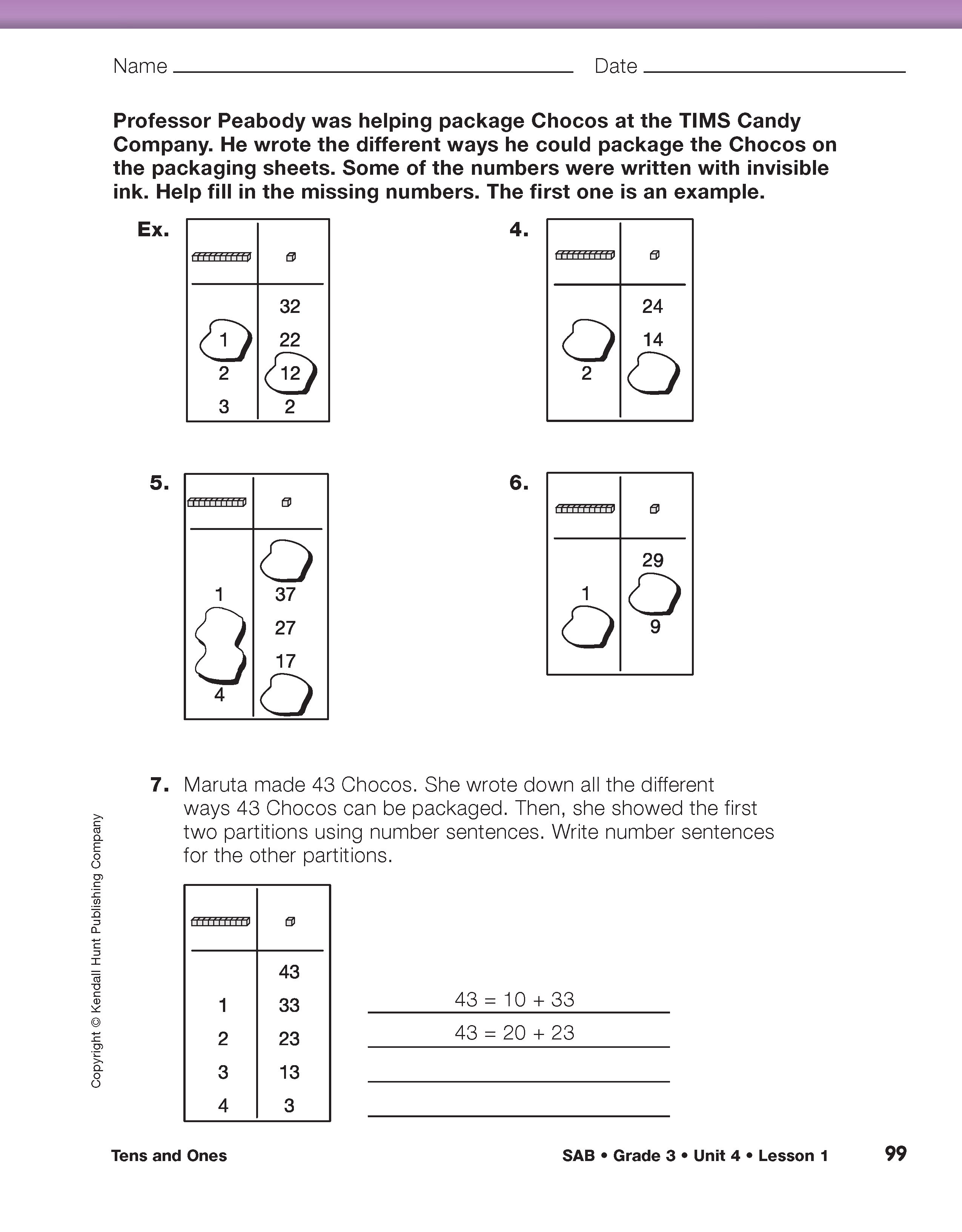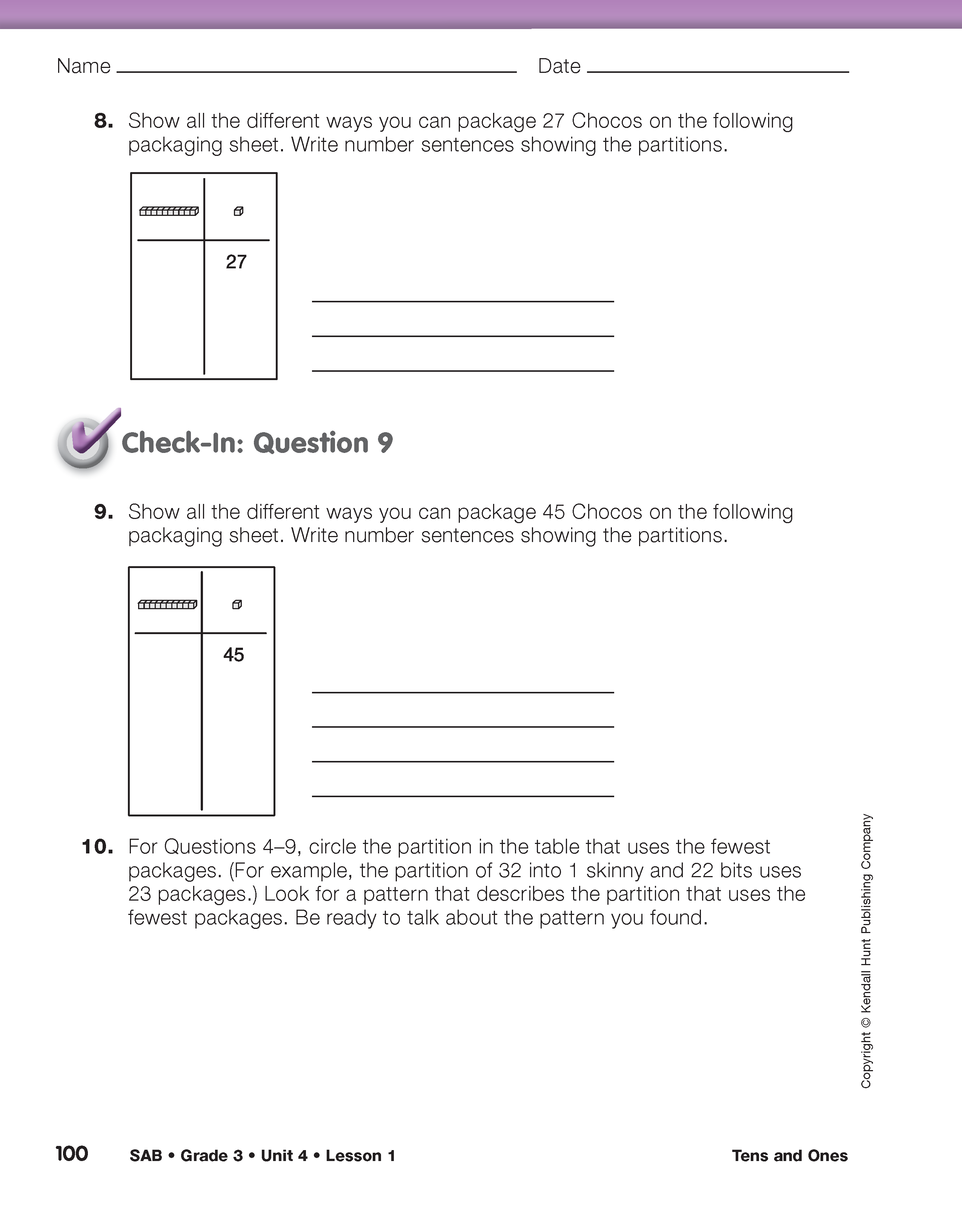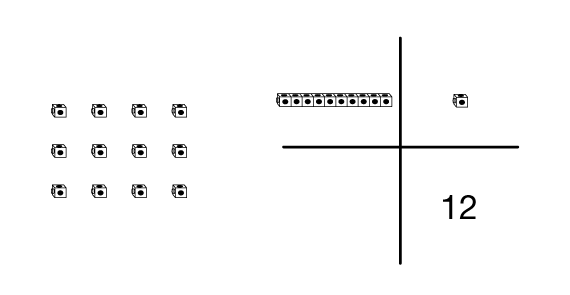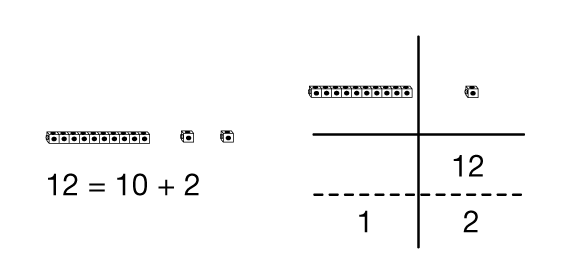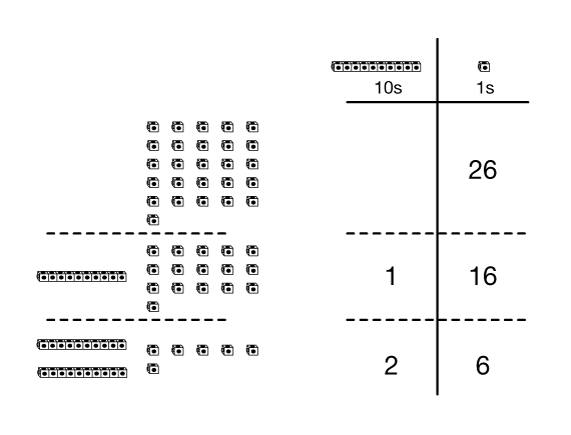Tens and Ones
Est. Class Sessions: 1Developing the Lesson
Partition 36. Begin the lesson with DPP Task B, which explores different ways to partition the number 36. Students write partitions that come up naturally with coins such as 36 = 25 + 10 + 1; a partition involving dozens, 36 = 12 + 12 + 12; and partitions into tens and ones such as 36 = 10 + 10 + 10 + 1 + 1 + 1 + 1 + 1 + 1 and 36 = 30 + 6. Explain that in this unit they will focus on partitions of a number that involve ones, tens, hundreds, and thousands.
Introduce the TIMS Candy Company. Use the Tens and Ones page in the Student Guide to set the context for partitioning numbers into tens and ones. The class is going to help the TIMS Candy Company investigate ways to package their chocolate candies. The candies are called Chocos. One individually wrapped Choco is called a bit (an individual cube). A box of ten bits is called a skinny.
In this lesson, students use connecting cubes to represent bits. They snap 10 cubes together to make skinnies. In subsequent lessons, they will use skinnies from base-ten sets.
Have students work in pairs and use connecting cubes to answer Questions 1 and 2. For Question 1, students represent the two packages of 10 Chocos with two stacks of 10 cubes and 16 single cubes. For Question 2, they will find that there are two more ways to package 36 Chocos as shown below:
1 skinny and 26 bits 36 = 10 + 26
3 skinnies and 6 bits 36 = 30 + 6
Ask pairs to do the following:
Draw and display a table on the board to record this two ways. First show 12 bits as in Figure 1.
Demonstrate snapping the ten cubes together to make a skinny. Two bits remain. Record 1 skinny and 2 bits in the table as shown in Figure 2. Write the number sentence 12 = 10 + 2 to show the partition of 12 represented by the pieces.
Partition Numbers into Tens and Ones. Draw and display a table on the board. Ask students to help you complete the table as they describe their ways to package the Chocos. See Figure 3.
Ask:
Direct students' attention to the Packaging Sheets page in the Student Activity Book. The first sheet on the page has been completed for 26 Chocos.
Ask:
Ask students to work with a partner to find different ways to package other amounts of Chocos such as 17, 23, and 35 and to record them on the Packaging Sheets page. Allow them to use connecting cubes. As students work, discuss their ways to package the numbers, and ask them to tell a number sentence that describes one of the partitions. Write the number sentence on the board.
For example, ask:
Pack 'Em Up. After they have explored several numbers, ask students to complete the Pack 'Em Up! pages in the Student Activity Book. In Questions 1–3, students simulate snapping bits together to make skinnies. In Questions 4–9, they explore different ways they can partition numbers into tens and ones.
After students have completed the questions, ask them to look back at the tables they completed for Professor Peabody in Questions 4–6.
Ask:














